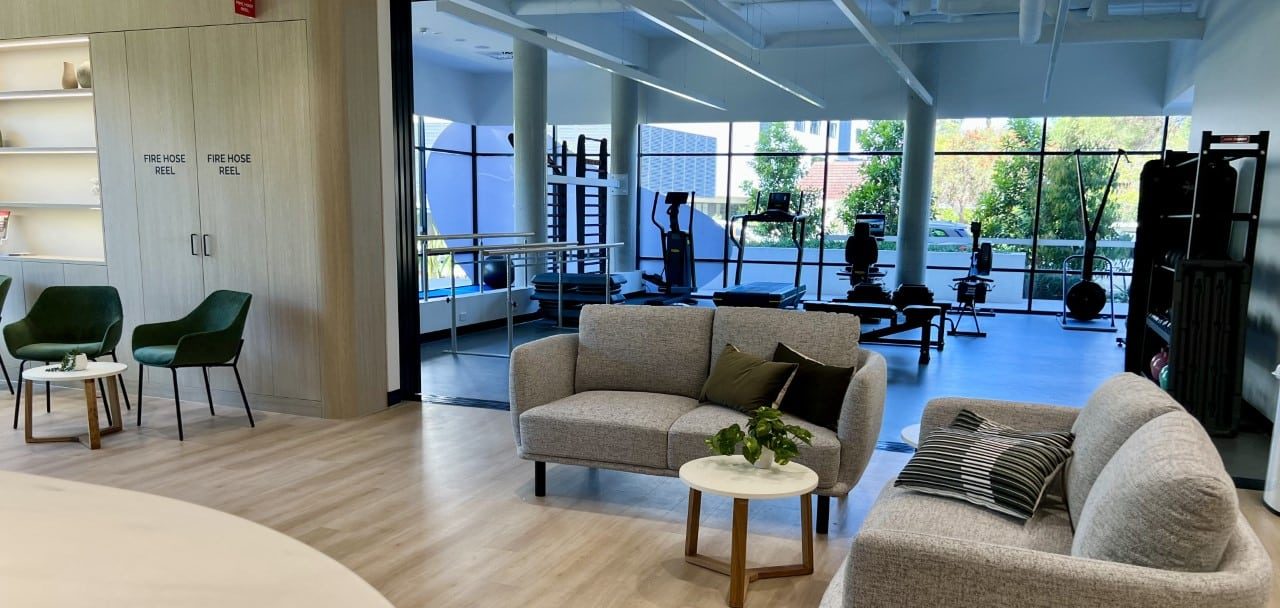More than one-third of people aged 65 years and older fall each year.
Half of those falls are re-occuring, and the risk of falling can double or triple if the person is cognitively impaired, or if they have a history of previous falls.
In other words, once you are over 65 and have had a fall, the risk of falling again, and getting injured is high. Even a mild cognitive decline can increase the risk of falling.
Some common reasons for falling include the loss of muscle mass as we get older, issues with poor balance and gait, and blood pressure that drops quickly when getting up from a lying down or seated position.
Falls can result in broken bones, bruising, head injuries (which can be serious if the person is taking meds like blood thinners), and even death in some cases.
One of the things I like to focus on is a preventative approach – working with patients before reaching age 65 and helping with balance and mobility – as well as helping people over 65 years overcome issues relating to falls.
Common falls issues
Unsafe footwear can be a major cause of falls in the elderly. This includes wearing loose slippers, shoes with worn slippery soles or narrow heels
Unstable surfaces around the home and when out and about. If the person has been in hospital, they are often sent home once they can walk independently with a walker in a straight line on hospital lino floors. But in order to thrive and enjoy their life, they need to be so much more mobile – to go up and down gutters and across uneven surfaces, be able to walk on grass and around clubs and backyards safely, and be able to walk backwards and sideways safely around small kitchens and bathrooms
Low confidence and muscle weakness after a fall – with nearly 1 in 3 older Australians experiencing a fall in the past 12 months, and even if this doesn’t result in a fracture, older people tend to limit their activities after a fall. This can become a vicious cycle, where a fall leads to muscle weakness and poor balance, which in turn can lead to another fall
Pain and stiffness after fractures and orthopaedic surgery post-fall. This can make a person less likely to move and maintain their usual activities – which can also lead to muscle weakness and poor balance – and subsequently further falls.
Physiotherapy as prevention and treatment
I’ve been a physiotherapist for over 30 years, and what I enjoy most is being able to see patients working hard to achieve their goals and make significant improvements in order to live independent and productive lives with their families – and within the community.
My proudest achievement is seeing patients with a significant disability after a neurological event recover as part of a mutli-disciplinary, team, working with their Geriatrician, GP and other specialists, and being able to return home to their community.
“In my experience, age is not a limitation to recovery, and I’ve seen patients well in their 80s to 100s work extremely hard to make good recoveries.”
By way of example – an 80 year old patient of mine fell and hit his head on tiles on the floor during a church service. He sustained a large subdural haematoma (a damaged blood vessel in the brain). He was taken to hospital and was Covid positive. Initially he was very confused, bedbound and tube fed.
It was suggested that he move to a nursing home, and his family pushed for a trial of rehab. Over 5 months, his multidisciplinary team was able to get him walking independently with a frame, eating regular food independently, and he was then able to return back to his own home with family support.
Specifically, his physiotherapy treatment consisted of a graded exercise and mobility program, with lots of time and simple explanations and encouragement to meet his goals.
He went back to assisting a church service the next day after discharge! At 80, he had no intention of retiring!
A comprehensive, supportive approach
My preferred style of treatment is a comprehensive assessment of muscle strength, range of motion, balance and walking posture/pattern, followed by a discussion of the patient’s goals.
Then a graded exercise program at home and in the clinic, aiming to work on deficits that increase falls risk and limit normal movement patterns.
I find the best results come when working collaboratively with the patients’ Geriatrician, GP, other specialists and their families. I try to make their physio sessions fun and rewarding and love to share and celebrate my patients’ achievements, no matter how big or small those wins are.
by Brellah Caringbah physiotherapist Nicole Ryan
Nicole Ryan grew up and lives in the Sutherland shire. She’s been a physiotherapist for more than 30 years, and has a wealth of knowledge in rehab and care of the elderly. She works with patients with falls and balance disorders, neurological conditions and cancer diagnoses.
This article is for information purposes only and is general in nature. It does not constitute medical advice, is not tailored to your personal circumstances and you should seek your own medical advice with regards to options best for you.

